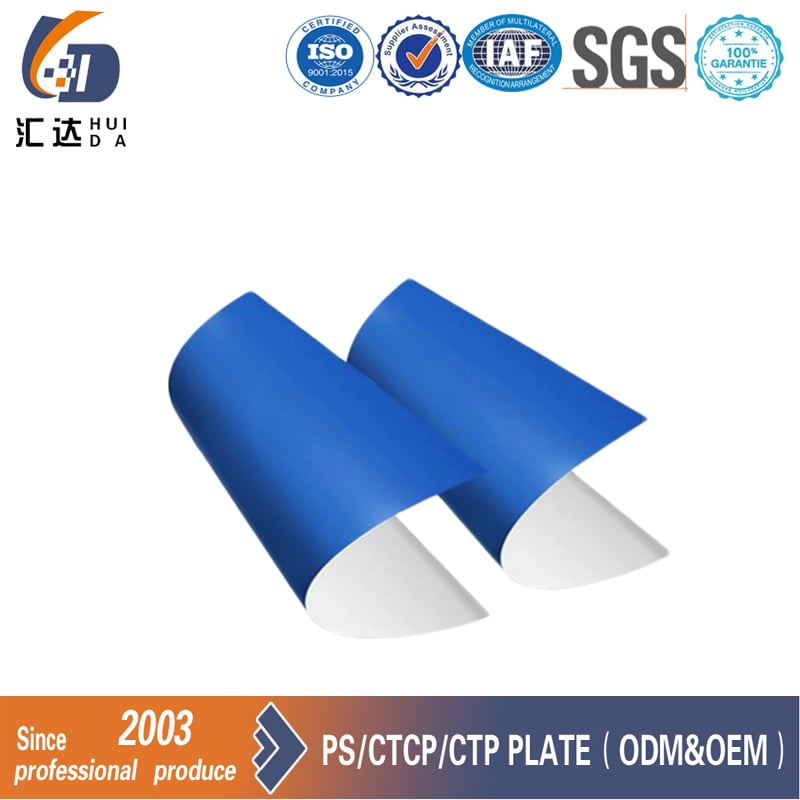
Direct plate-making is the inevitable result of the development of digitalization and integrated production
The direct conversion of digital pages to printing plates places two basic requirements on direct-to-plate technology.
First, the digital page must be complete in content and completely reliable in quality. It is actually another form of existence of the final product (digital mode);
Second, the conversion technology is required to complete faithful and reliable conversion and meet the requirements of plate-making and printing processes in terms of speed, efficiency, quality, cost, and requirements for consumables and the environment. This requires that direct plate making must have a complete digital prepress production environment to ensure that all elements of the digital page, such as images, text, lines, symbols, numbers, etc., exist in digital form.
The complete digital prepress production environment gradually took shape in the late 1980s. High-quality desktop publishing systems with pictures and texts based on workstations and personal computers began to be widely used in the printing field and gradually became the main prepress production method. In the early 1990s, the digital prepress production environment had basically matured, and the quality of digital pages with pictures and text had reached or even exceeded the level of traditional plate-making technology. As long as appropriate conversion technology is used, digital pages can be directly converted into products in the required form. Such as film, printing plates, proofs, printed matter, etc. The digital environment required by direct-to-plate technology has become technically mature, and supporting output conversion technology and equipment have become key and the focus of development research.
The emergence of Imageset makes it possible to convert digital pages into full-page films with pictures and text. It integrates the operations of color separation, hanging screens, phototypesetting, imposition, and copying in traditional processes into a whole, with high-quality computer systems. , completed at high speed, the digitization of prepress operations extends from the original to the entire page of the film. This production system, which is dominated by digital prepress systems and image typesetters, has become the most important technical means and basic configuration of today's prepress production.
The emergence of the plate setter makes it possible to convert digital pages into printing plates directly. It integrates the operations of color separation, screen hanging, phototypesetting, imposition, copying and even printing in traditional processes into a whole, which is controlled by the computer system. Completed, achieving complete digitization of prepress operations. Direct plate making extends the digitization of pre-press operations from the original manuscript to the printing plate, eliminating the use of intermediary media such as silver salt photosensitive film, ending the history of pre-press production relying on silver salt film, and realizing "Filmless.
The emergence of the digital press makes it possible to directly convert digital pages into printed matter, integrating traditional pre-press, printing, and even post-press operations into a whole, completed by a computer system. This is a "thorough" digital production technology. All products exist, circulate, and are processed digitally in the production system before meeting customers. Digital printing no longer uses printing plates in the traditional sense. It is a plateless printing method. Therefore, it has the capabilities of variable information printing and on-demand printing and has become an emerging technology. The main production technology means for the on-demand/personalized market.
The emergence of Digital Proofermakes it possible to directly convert digital pages into color proofs, realizing the digitization of proofing, which is the so-called direct digital color proofing From the perspective of printing production, DDCP is actually an auxiliary technology supporting direct plate making, because all traditional proofing methods either cannot meet the requirements of direct plate making in terms of speed, such as traditional color printing, Powder or laminated simple proofing. Of course, the high quality of DDCP can also find applications in other fields, such as advertising, window displays, posters, art design, etc.
It is obvious that direct plate-making is actually the inevitable result of production integration and an important symbol of the development of digital production. From the perspective of industrial technology, direct plate making not only requires corresponding imaging equipment and materials but also requires coordination between supporting digital environment, control management technology, and equipment to realize its potential and advantages.
Huida Print-All Technology company is an advanced and professional manufacturer of printing plates, mainly selling CTP, CTCP, and PS plates as well as offering ODM/OEMs, especially for the offset. For more information, please click the official website link here: https://www.huidaoffsetplate.com/.

